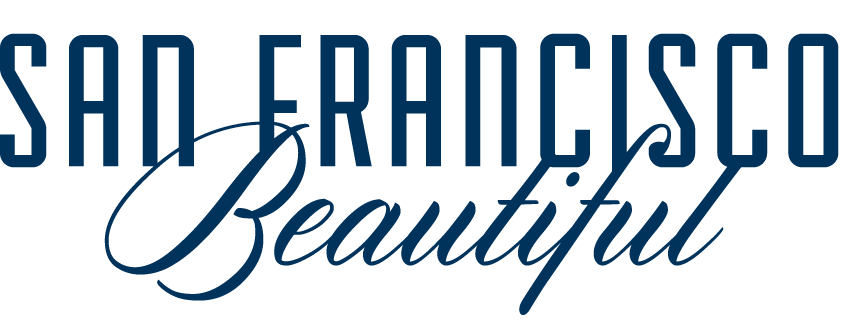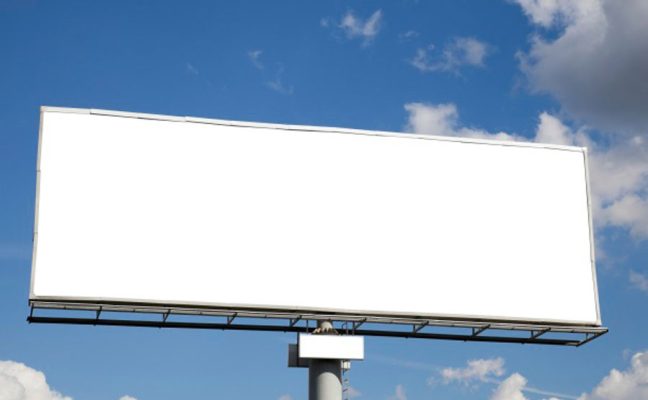Ads or billboards on our skyline, in our stations, on our buses, and sidewalks act as blight in our communities and diminish surrounding property values.
SF Beautiful has long worked to limit the presence of billboards, general advertising, and other visual pollution throughout the city. We pass and enforce legislation to limit, reduce, and regulate billboards, and general advertising.
Before the Bay Bridge was even completed, there were proposals to add billboards it. Thankfully, before there was SF Beautiful, people were still organized in opposition to this blight.
SF Chronicle – September 25, 1936: “A bedlam of advertising would be a shock to motorists coming into the city for the first time,” said Mrs. Freida Klussmann, speaking for the San Francisco Society of Women Artists.
From the Planning Commission Meeting Minutes, October 2, 1969: The report from Planning staffer Peter Svirsky, makes the case against general advertising in communities. SF Beautiful representative Toby Bloxam testified in opposition to this failed proposal.
It would seem that the only argument in favor of the present proposal is the small amount of annual revenue it would afford to the City. Arguments that have been advanced against the proposal are as follows:
1. The advertisements proposed would be unsightly and would adversely affect the appearance of street areas throughout San Francisco. They would therefore work at cross purposes with extensive public and private efforts and expenditures that have been made to improve the appearance of these same street areas…
After further discussion it was moved by Commissioner Porter, seconded by Commissioner Newman, and carried unanimously that the Director be authorized to report that the proposal for advertising on parking meters is in conflict with the Master Plan.
Shortly after passing the regional Bonds needed to build the BART system and a Beautification Bond to clean up Market Street, San Franciscans learned of BART’s plans to add large ads to the system. SF Beautiful was present to protest the low revenues, the blight, and to question the volume of advertising that the public were to face above, and now below ground. (July 23, 1970 Planning Commission Meeting Minutes)
SF Beautiful and Supervisor Leno lead the charge to amend the Planning code and substantially increase the penalties for violation of regulations governing general advertising signs and establish an enforcement division with the fees and administrative penalties collected.
Supporters included:
+SPUR
+Union Square Association
+Potrero Boosters Association
+National Association of Realtors
In 2002 we sponsored Prop G, limiting the over-commercialization of San Francisco and protecting San Francisco neighborhoods and parks by prohibiting any new billboards/general advertising signs. The proposition passed with 79% voter approval.
Billboards belong in little cities with nothing to say. Let our skyline be our statement that San Franciscois no longer for sale to the highest bidder. Vote Yes on Proposition G.– Michael R. Farrah Jr.
In 2007, in response to a budget shortfall the Golden Gate Bridge Highway and Transportation District, sought corporate sponsorship with billboards, placards, video screens, bus ads, and even branded restrooms.
“It will be appropriate and understated,” Mr. Bartram said. “But visible.” – New York Times, The Golden Gate Bridge, Brought to You By…
SF Beautiful successfully protested the plan, and then set to work on Prop K to ensure we wouldn’t face this type of scheme again.
Clear Channel spent more than $100,000 and launched an “ad blitz” to defeat this policy measure which prohibits additional advertising on street furniture and public buildings and asks city officials to limit the advertising spaces to their current quantity. This would not allow any increase in general advertising signs on benches, newspaper racks, transit shelters, benches and kiosks. Prop K passed with 54% despite the fact that it signaled lost potential revenues for MUNI and that SF Beautiful didn’t spend a dime.
While the City experiences various financial strains, our leaders can and must find alternatives to selling off public spaces. Halt visual pollution. Vote “Yes” on Prop. K.– Scott Wiener
In 2009, we successfully defeated Prop D. This failed privately funded initiative would have created a Mid-Market Sign District, a West Coast version of Times Square, complete with roof signs, illuminated signs, video signs and rotating signs. Proponent outspent San Francisco Beautiful 20-to-1 and was still defeated, 54%.
Prop E prohibits more advertising on street furniture and public buildings. It puts into force as an ordinance the Nov. 2007 Prop K policy statement. At the depth of the 2008 Recession, voters knowingly said “no” to additional potential ad revenues for City’s general fund. The proposition passed with 57.28%
The visual pollution that assaults our senses and our sensibility daily diminishes the quality of our urban environment. Proposition E allows us to assert, once again, that we cherish the sacred spaces that are public and that are created for our public enjoyment, not private exploitation.-Former SF Supervisor Jake McGoldrick
In 2012, the City violated Proposition G when it quietly approved the settlement of a lawsuit that illegal billboard operator, Metro Fuel, filed in federal court. Metro Fuel disputes the City’s filing of Notices of Violation for 84 of its illegal billboards and the over $7 million in fines they had racked up. In exchange for removing its illegal signs, the settlement allowed Metro Fuel to increase the number of its signs in San Francisco by “deaggregating” large billboards and using up to 75% of the square footage into more than 120 new smaller billboards or general advertisements.

